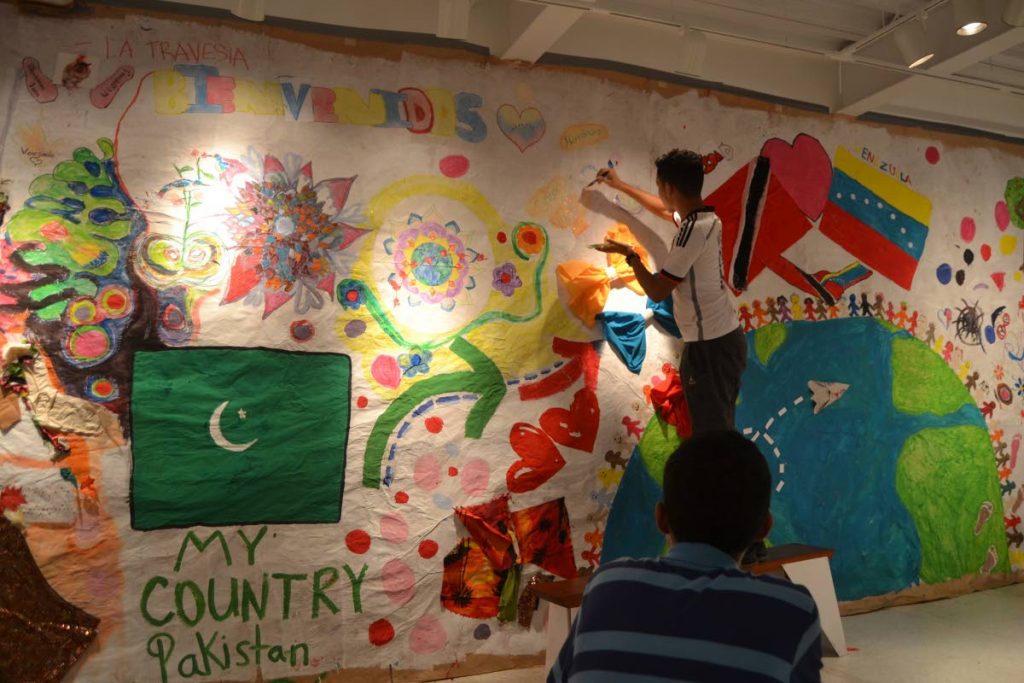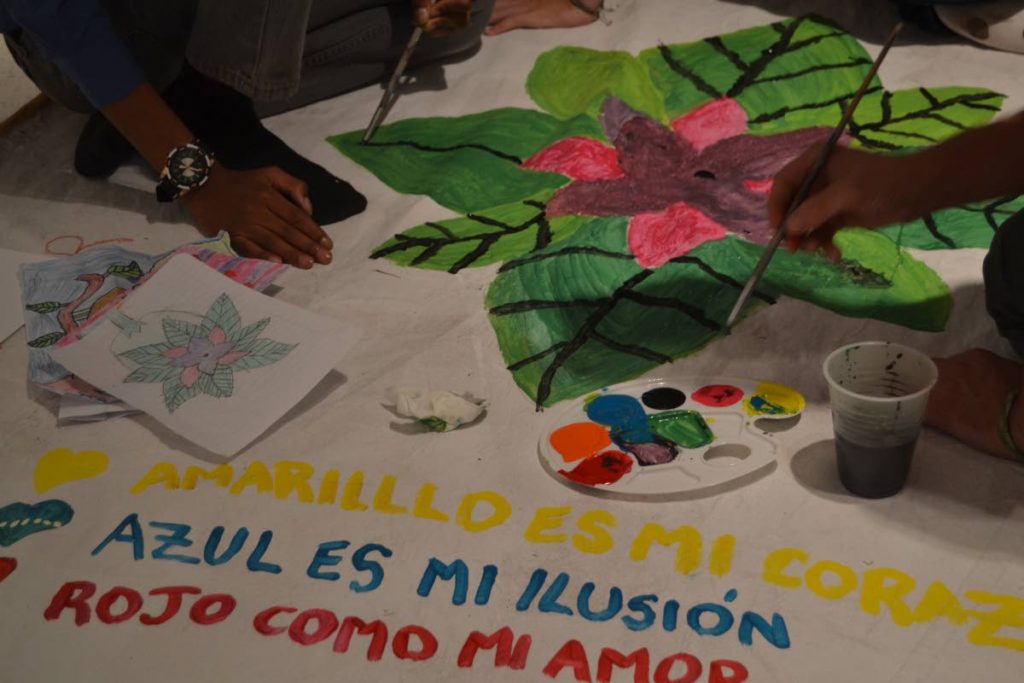Refugee stories

Loss and fear of rejection were the two most prevailing feelings among refugee children who participated in a recent art therapy workshop. But the hope of acceptance and for a brighter future remained.
The annual three-day workshop was facilitated by art psychotherapist Kim Bryan, and psychotherapist and art therapist Sian MacLean. The results – three murals – will be exhibited as In-Between: Stories of a Refugee at Medulla Art Gallery, Fitt Street, Woodbrook, from July 4.
Bryan and MacLean worked in collaboration with Medulla Art Gallery, the Living Water Community’s Ministry for Migrants and Refugees, artist Dean Arlen, and psychologist Greisy Gonzalez to give 15 children (ages 12-17) from five countries – Venezuela, Cuba, Pakistan and two other Caribbean countries – a therapeutic experience. They have previously addressed topics such as domestic abuse and depression in their workshops. This year they focussed on the refugee crisis being experienced all over the world.
“We try to stick with relevant topics because the overarching role of art therapy is to advocate and to help people to tell their stories. So wherever there is an issue critical to society at the time, it is a good way to address and highlight some of these,” said Bryan.
“People telling their stories is not always easy especially when we have a language barrier, but art can be used as a universal form of communication so those stories can be told no matter what they speak,” MacLean added.
Bryan noted that people usually focus on adults, and children’s stories are the least heard, although they too have a lot to contribute because of their experiences. In addition, MacLean said, children have the least control of their lives. “They have no control over where their parents decide to go or what their parents decide to do, so they are quite powerless. Just giving them the opportunity to have a voice is empowering.”
Each of the murals had a different theme – Hopes and Dreams, The Journey, and Home. Hopes and Dreams showed they have a great deal of hope for the future, not only for themselves but for their countries and the world as well. It also revealed they are aware of the many negative feelings towards refugees and their fear because of it, as some wrote, “Please don’t reject us.”
MacLean said, “One of the major challenges that refugees face coming into a host county is the rejection, prejudice, and intolerance of its people towards them. When people have to hide who they are, or where they are from, their voices become even smaller and they run the risk of never being able to tell their stories. The workshops provided a safe space for these children to share their experiences, and gave them the opportunity to be seen and heard.” She said Home was very difficult for many of them because there were feelings of loss and pain about the things they left behind. This mural took the longest to complete, which was evidence of the feelings it raised.

Bryan explain that while they could not provide group or individual therapy in three days, it was a therapeutic experience for the children, and said the feedback the workshop leaders received was positive. The children said they felt good and were happy that people had listened to them. Their feelings and wishes were acknowledged, their expressions were not dismissed or ridiculed, it gave them the opportunity to learn from other cultures, and they got to do art.
MacLean said, “The experience of being a refugee is very traumatic for them and we are just trying to help them remain positive because they are facing so much adversity now. If they are going to be integrated in our schools and in our society they are going to face a lot. It’s good they had this positive experience with us, working with Trinidadians.”
The exhibition also allowed a fourth mural on which the viewing public could draw or write to express themselves on the topic of refugee children or “children on the move.”


Comments
"Refugee stories"